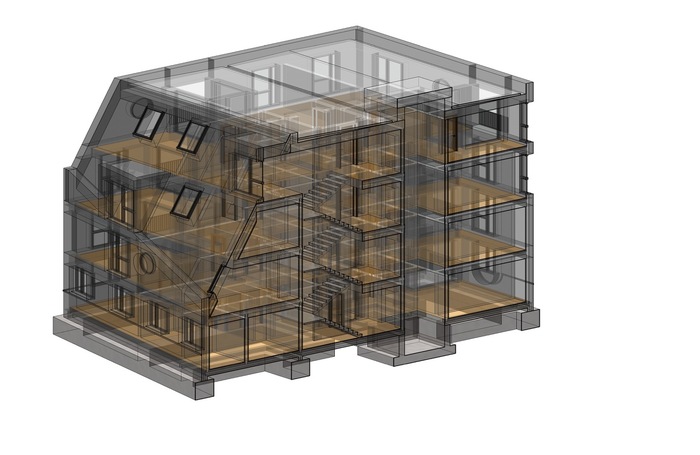BIM has made the transition from niche platform to the norm. Nearly three-quarters of those surveyed in the National BIM Report 2018, reported that they were ‘aware and using’ BIM.
The proportion who said they used BIM only on a minority of projects fell to around one quarter. NBS, who run the survey, predict that BIM equipped practices will be using it on at least 90% of their projects routinely within the next three to five years.

RIBA members are urged to take part in the survey for this year’s NBS National BIM Report. It is a chance to add all kinds of practices’ experiences to the national picture.
The big recent news in BIM was the publication of the first two parts of the international BIM standard ISO 19650 at the end of January. This replaces the UK’s PAS 1192 documents, which set out requirements for BIM compliance.
This is potentially good news for UK consultants working internationally. BIM specialists are advising UK firms set up for PAS 1192 that they are effectively already set up for the international standard, as it is essentially a tweaked and re-aligned cousin of the UK one.
Hong Kong, Singapore and Australia have all recently followed the UK in mandating BIM use in public-sector projects. Peter Barker leads the consultancy team at the BIM Academy, which supports clients on large-scale projects around the world.
Barker, who is also a Director at the 200-strong Ryder Architecture, believes the new ISO standard will promote a more standardised approach to BIM internationally. All of which is good news for UK architects seeking work overseas.
He has found the most interesting recent BIM developments within the UK have come from architects and engineers developing their own customised BIM tools, most notably in the area of parametric modelling; designing objects or systems that model component attributes with real-world behaviour.

BIM is certainly no longer just the preserve of large practices such as Ryder. At the seven-strong practice Archio, founder Kyle Buchanan says around 70% of their work is done through BIM, usually on new-build projects.
The practice first trialled BIM on a single project using Autodesk Revit in 2016. They had a big push on Revit training the following year as they rolled out BIM on more projects.
Buchanan says it was always his aim to offer a big practice level of service to clients, with BIM playing a large part in this approach. Benefits include productivity savings where there is repetition in construction detailing, better project coordination with other BIM enabled consultants and contractors, and fewer design errors.
Archio focuses on housing, although not exclusively. Public sector clients are more likely to want BIM, Buchanan reports. Private housing clients tend to have less interest in the BIM process, while the size of the project often determines whether the main contractor will use BIM.
Buchanan is excited about the capabilities of BIM, particularly its provision of accurate, live, adaptable costing information. He considers an ongoing BIM training programme essential in keeping young architects up to speed and bringing a better understanding of BIM potential to more senior staff.
Peter Barker is also enthusiastic about the future. For a new city planned on the periphery of Hong Kong, Barker is looking at using Geographical Information System (GIS) mapping at the masterplanning scale.
He recalls that when the BIM Academy was set up, Ryder and its Northumbria University partner thought it might have a lifetime of around three years, after which BIM would simply be standard. Instead, Barker says BIM has become one part of a much wider digitisation of the built environment; it is just the beginning.
Contribute to this year’s NBS National BIM Report. The survey closes on February 28 2019.
Thanks to Peter Barker, Director at Ryder and Managing Director of the BIM Academy; Kyle Buchanan, founder, Archio.
Text by Neal Morris. This is a Professional Feature edited by the RIBA Practice team. Send us your feedback and ideas
RIBA Core Curriculum Topic: Design, construction and technology.
As part of the flexible RIBA CPD programme, Professional Features count as microlearning. See further information on the updated RIBA CPD Core Curriculum and on fulfilling your CPD requirements as an RIBA Chartered Member.
Posted on 14 February 2019.









